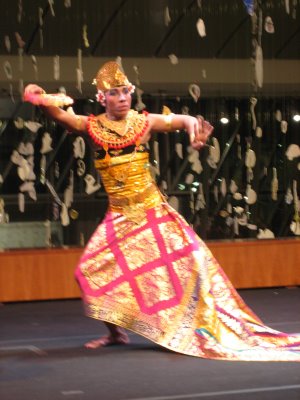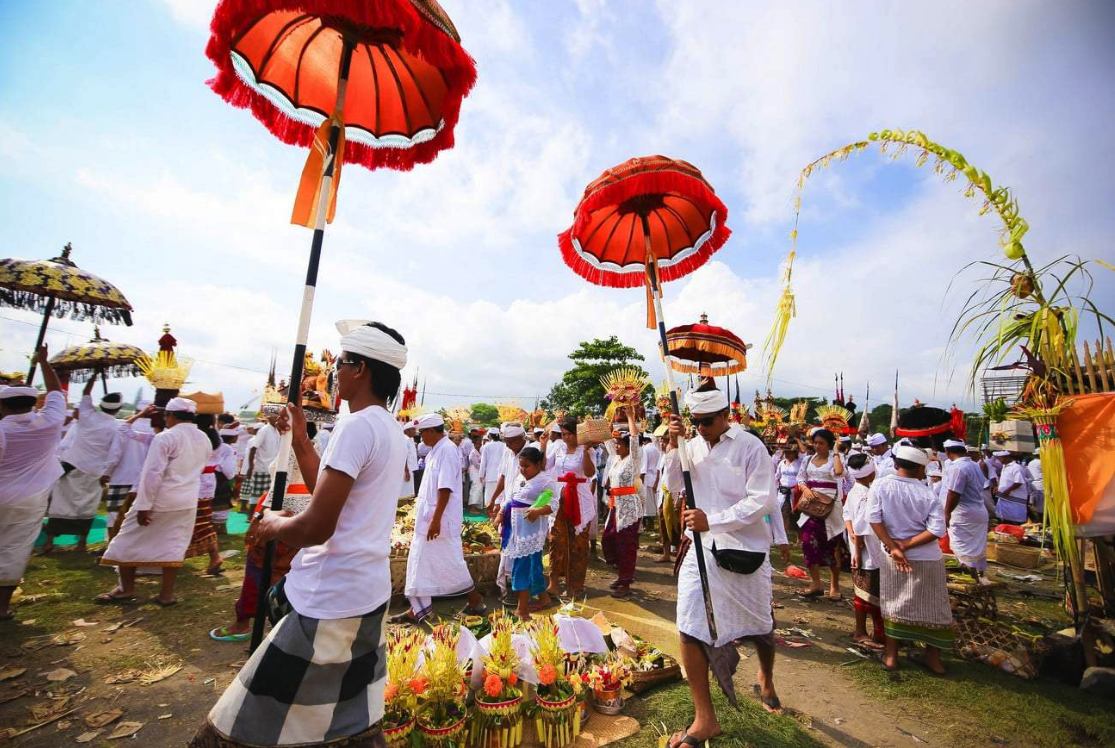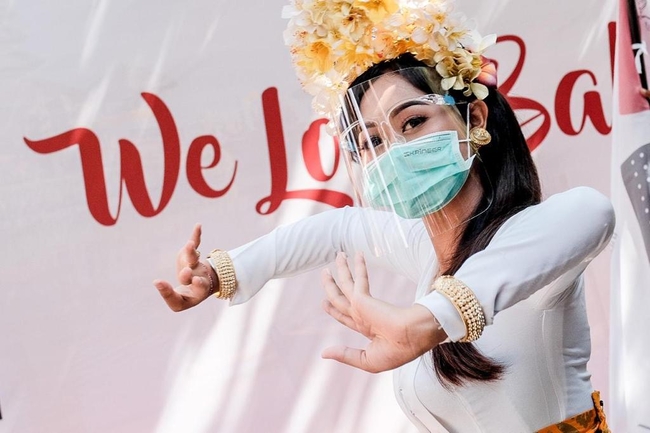 Just as the Legong is essentially feminine, the Baris, a traditional war dance, glorifies the manhood of the triumphant Balinese warrior. The word baris means ‘line’ or ‘file’ and refers to the warriors who fought for the kings of Bali. There are numerous kinds of Baris, distinguished by the arms borne by the dancers.
Just as the Legong is essentially feminine, the Baris, a traditional war dance, glorifies the manhood of the triumphant Balinese warrior. The word baris means ‘line’ or ‘file’ and refers to the warriors who fought for the kings of Bali. There are numerous kinds of Baris, distinguished by the arms borne by the dancers.
Originally, the dance was a religious ritual: the dedication of warriors and their weapons during a temple feast. From the ritualistic Baris Gede grew the dramatic Baris, a story prefaced by a series of exhibition solo dances that show prowess in battle. It is from these that the present Baris solo takes its form. A good Baris dancer must undergo rigorous training to obtain the skill and flexibility that typifies the chivalrous elegance of the dance.

A Baris dancer must convey fierceness, disdain, pride, alertness, compassion, and regret — the characteristics of a warlike noble. The Baris is accompanied by gamelan orchestra, and the relationship between dancer and orchestra is an intimate one; the gamelan must be entirely attuned to the changing moods of the warrior’s will.
At first, the dancer’s movements are studied and careful, as if he were seeking out foes in an unfamiliar place. When he reaches the middle of the stage, however, hesitation gives way to self-assurance. He rises on his toes to his full stature, his body motionless with quivering limbs. In a flash, he whirls on one leg and his face renders the storm of passions of a quick-tempered warrior.














